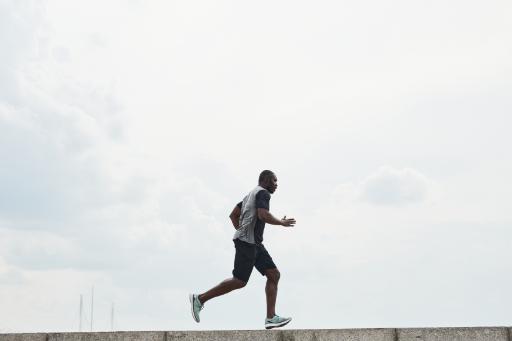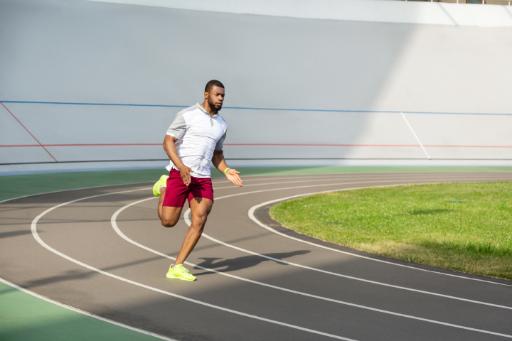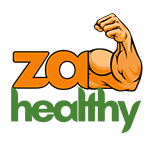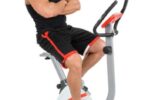Running and jogging are two popular forms of physical activity that can improve your health, fitness, and mood. But what exactly is the difference between them? Which one is better for you? This blog will explore the similarities and differences between running and jogging and help you decide which suits your goals and preferences.
What is Jogging?

Jogging is a form of running that is slower and more relaxed. It is usually done at a pace of 6 mph or less or about a 10-minute mile or more. Jogging is considered an aerobic exercise, which uses oxygen to produce energy and burns fat as fuel. Jogging can improve cardiovascular health, lower blood pressure and cholesterol, strengthen bones and muscles, and reduce the risk of chronic diseases. Jogging can also boost mood, relieve stress, and enhance mental well-being.
Jogging is ideal for beginners, people who want to lose weight, or people who enjoy a leisurely pace. Jogging requires limited equipment or preparation and can be done almost anywhere and anytime. Jogging is also a great way to warm up before a more intense workout or to cool down after one.
What is Running?

Running is a form of jogging that is faster and more purposeful. It is usually done at a pace of more than 6 mph or less than a 10-minute mile. Running is considered an anaerobic exercise, which means it uses carbohydrates to produce energy and burns calories as fuel. Running can improve your cardiovascular health, increase your metabolism, build your muscle mass and endurance, and improve your performance and speed. Running can also boost mood, relieve stress, and enhance mental well-being.
Running is ideal for intermediate or advanced exercisers, people who want to challenge themselves, or people with specific goals or competitions. Running requires more effort, skill, and preparation than jogging and may need more equipment and recovery. Running is also a great way to vary your intensity, duration, and distance and to test your limits and abilities.
How to Choose Between Running and Jogging ?

There is no clear-cut rule that defines when you are running or jogging. The difference is subjective and depends on your fitness level, experience, and preference. Some people may consider themselves runners even if they run at a slower pace than others, while others may prefer to call themselves joggers even if they run faster. The important thing is to find what works for you and makes you happy.
You consider your goals, interests, and abilities to choose between running and jogging. Here are some questions to ask yourself:
- What is your current fitness level? If you are new to exercise, jogging may be a better option than running, as it is easier and safer. If you are already fit, running may be better than jogging, as it is more challenging and rewarding.
- What are your goals? If you want to lose weight, jogging may be a better option than running, as it burns more fat and can be done for extended periods. If you want to improve your performance, running may be a better option than jogging, as it burns more calories and can improve your speed and endurance.
- What are your interests? If you enjoy a leisurely pace, jogging may be a better option than running, as it is more relaxing and enjoyable. If you want a fast pace, running may be a better option than jogging, as it is more exciting.
- What are your abilities? If you have any injuries, limitations, or health conditions, jogging may be a better option than running, as it is less stressful and demanding. If you have no issues, running may be better than jogging, as it is more beneficial and effective for your body.
How to Start Running or Jogging?

Whether you run or jog, you should start gradually and progressively. Here are some tips to help you get started:
- Consult your doctor before beginning any exercise program, especially if you have any medical conditions or concerns.
- Choose a suitable time, place, and frequency for your exercise. Aim for at least 150 minutes of moderate-intensity aerobic activity per week, 75 minutes of vigorous-intensity aerobic exercise per week, or a combination of both.
- Choose a comfortable and appropriate outfit, shoes, and accessories for your exercise. Ensure they fit well, support your feet and body, and protect you from the weather and environment.
- Warm up before your exercise and cool down after your exercise. This will help you prevent injuries, improve your performance, and speed up your recovery.
- Follow a training plan that suits your level, goals, and preferences. You can use online resources, apps, books, or coaches to help you create and follow a plan. A common beginner training plan is the Couch to 5K program, which helps you gradually build up your endurance and speed from walking to running a 5K in 9 weeks.
- Listen to your body and adjust your pace, intensity, and duration accordingly. You should be able to breathe comfortably and talk easily while exercising. If you feel any pain, discomfort, or fatigue, stop and rest. If you feel any symptoms of overexertion, such as dizziness, nausea, chest pain, or shortness of breath, seek medical attention immediately.
- Track your progress and celebrate your achievements. You can use a watch, a phone, a tracker, or a journal to record your distance, time, speed, calories, and other metrics. You can also use a scale, a tape measure, a mirror, or a camera to monitor your weight, body fat, muscle mass, and appearance. You can also use a diary, a blog, or a social media platform to share your thoughts, feelings, and experiences. You can also reward yourself with a treat, a gift, or a compliment for reaching your milestones and goals.
Conclusion
Running and jogging are great ways to stay fit, healthy, and happy. The difference between them is mainly based on speed and goals, but it is also influenced by your fitness level, experience, and preference. You can run or jog, depending on what suits you best, or you can do both to enjoy both benefits. The most important thing is to have fun and enjoy the journey. Happy running or jogging!







